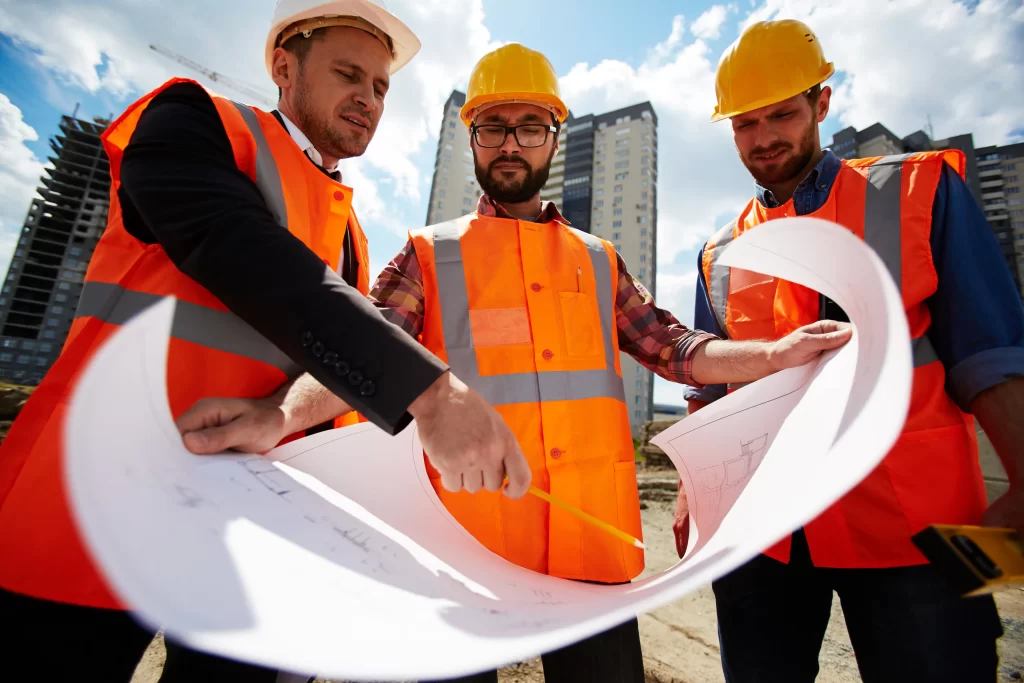Our Address:
In the rapidly evolving landscape of commercial construction, maintaining rigorous safety standards is paramount. These standards are not just regulatory requirements but are crucial for safeguarding the health and well-being of workers and the public. For companies like Commercial Interior Solutions (CIS), operating across Tampa, St. Petersburg, Clearwater, Largo, and other areas within Hillsborough and Pinellas counties, adherence to these safety norms is at the core of their operations. This article delves into the essential safety standards for commercial construction projects, outlining practices that ensure project sites are not just productive, but also secure and compliant.

Comprehensive Safety Plans
A robust safety plan is the foundation of any commercial construction project. This document outlines specific hazards associated with the project, safety protocols, emergency procedures, and the roles and responsibilities of team members. For CIS, creating a detailed safety plan is a preliminary step that guides the entire construction process, ensuring every aspect of the project aligns with the highest safety standards.
Regular Safety Training
Ongoing training programs are vital for equipping workers with the knowledge and skills to navigate the complexities of commercial construction safely. This includes training on personal protective equipment (PPE), proper use of construction tools and machinery, and emergency response techniques. CIS emphasizes regular safety training sessions, ensuring their team is up-to-date with the latest safety protocols and industry practices.
Hazard Communication
Effective hazard communication is essential for preventing accidents and injuries on construction sites. This involves clear labeling of hazardous materials, providing Safety Data Sheets (SDS) for chemicals used on-site, and ensuring workers are fully aware of potential risks and the precautions to take. CIS adheres to strict hazard communication standards, fostering a culture of safety and awareness among its workforce.
Personal Protective Equipment (PPE)
The use of appropriate PPE is non-negotiable in safeguarding workers against injuries. Helmets, safety glasses, gloves, and high-visibility clothing are just a few examples of the PPE that workers should wear, depending on the specific risks associated with their tasks. CIS mandates the use of PPE for all personnel on site, closely monitoring compliance to minimize the risk of accidents.
Ergonomics and Worker Welfare
Considering ergonomics and worker welfare involves designing workstations and tasks to prevent strains, sprains, and musculoskeletal injuries. It also includes providing adequate rest breaks, hydration, and access to first aid. CIS recognizes the importance of ergonomics in construction, implementing measures to ensure workers are not just safe, but also comfortable and healthy.
Emergency Preparedness and Response
Preparation for emergencies, including fires, medical incidents, and natural disasters, is critical. This entails regular drills, accessible emergency exits, fire extinguishers, and first aid kits, alongside a well-communicated emergency response plan. CIS’s comprehensive emergency preparedness protocols exemplify their commitment to safety, ensuring a swift and organized response to any incident.
Continuous Monitoring and Improvement
Finally, continuous monitoring of safety practices and the implementation of improvements is vital. This includes regular safety audits, inspections, and the encouragement of feedback from workers on safety measures. CIS engages in continuous evaluation of their safety protocols, adapting and enhancing their practices to meet and exceed industry standards.
For commercial construction projects, adhering to essential safety standards is not just about compliance; it’s a commitment to the well-being of everyone involved. Companies like Commercial Interior Solutions lead by example, showcasing how rigorous safety practices can coexist with quality and efficiency in commercial construction. Whether in Tampa, St. Petersburg, or across Hillsborough and Pinellas counties, CIS’s dedication to safety standards serves as a benchmark for the industry, ensuring that commercial construction projects are safe, successful, and sustainable.





